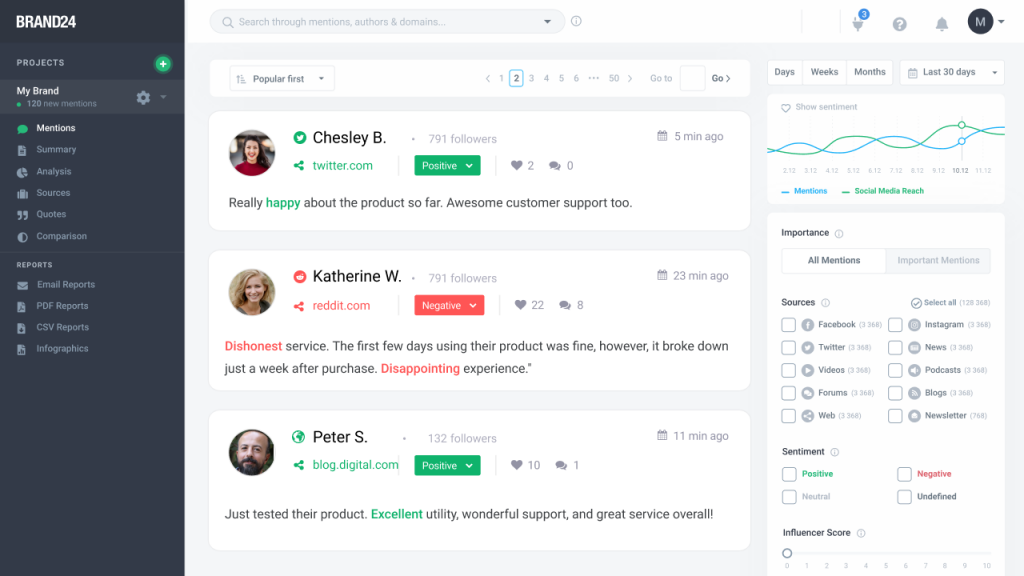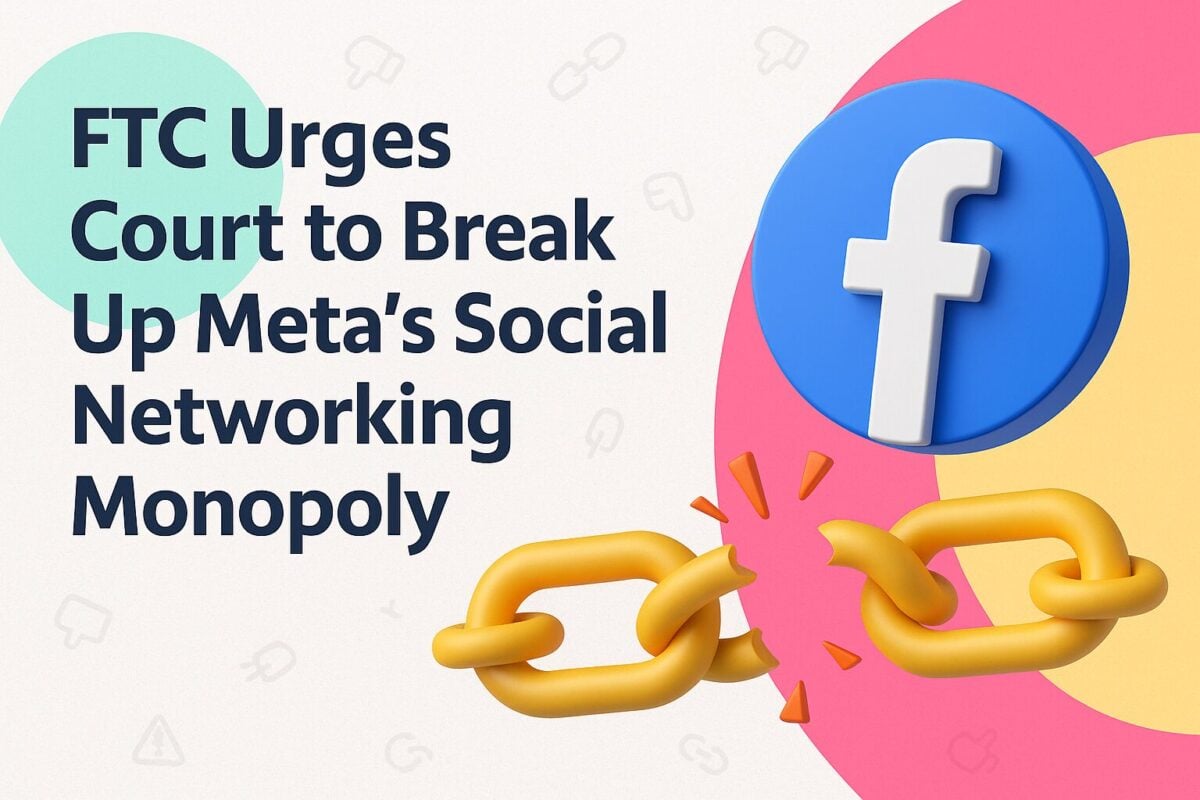The Information Age gave birth to new media and a free, almost unfettered flow of information. The Internet invites its users to express their opinions, experiences, recommendations, worries, and expectations about various things. Social media, news sites, blogs, discussion forums, or review sites are bustling with noise about brands, products, services, and businesses.
According to the Digital 2021 April Global Statshot Report, global internet users reached more than 4.7 billion at the start of April 2021. As a result, the entire data in the world has risen to 74 zettabytes. However, this is not the end. The consumption of data is constantly growing.
Brand mentions, customer insights, customer feedback, negative publications, endorsements, positive reviews – they all contain qualitative pieces of data.
Information is power. In terms of business, information affects the business performance and decides about competitive advantage. It’s business intelligence – the knowledge of different aspects, which allows you to understand your customers, analyze their behavior and predict future transformations. These insights can serve as elements of strategy making or even direct decisions about product strategy, marketing campaign implementation, or operational process alteration.
The customers’ needs and requirements change very quickly. To keep up with changing market conditions, you need to stay ahead of the competition, analyze your business performance regularly, and predict future transformations.
Checking the Internet for trends, evaluating products, services, or overall customer experience is crucial. With information about customer preferences, it’s possible to focus your marketing efforts on the most profitable segments of the market. This also allows you to improve service quality and track potential risks.
Such information can be acquired using media monitoring tools, for example, Brand24. Media monitoring tools not only collect online mentions of predefined keywords but also analyze their performance: metrics of volume, metrics of influence, metrics of sentiment, and more.

Source: brand24.com
Let’s have a closer look at 10 areas of business where media monitoring delivers business intelligence.
How Media Monitoring Delivers Business Intelligence to Positively Impact Your Business
1. Brand Reputation
Brand reputation is a broad term that encapsulates an overall perception of your business. It’s not just a buzzword; it’s the reality that affects your business performance. Customer expectations grow every day. The list of attributes that customers expect from brands is growing: product or service quality, safety, environmental friendliness, positive impact on the community, and others.
A brand is just a range of experiences your corporation provides and their public perception. The sooner you embrace it, the better.
Online mentions are the reflection of customers’ opinions. They can be both positive and negative. Online mentions' volume, sentiment, and influence help you track your brand perception over time. You can easily see whether your marketing efforts are successful or not, how well you’re meeting customer expectations, and where you need to improve.
If you monitor your online mentions regularly, it’s easier to understand what people say about you or your products, how often they talk about you, what their tone is like (positive or negative), and how influential they are. This allows you to take the necessary steps to improve your brand reputation whenever required.
Brand monitoring is your way to find:
- Negative reviews
- Positive reviews
- Inspiration
- Brand ambassadors
- Customer feedback
- Suggestions of improvements
- News publications
- Expert opinions
- Industry reviews
They create an overall image of your brand that your potential customers can stumble upon online and share even further.
Customer reviews are one of the most trusted forms of expert recommendation, with 79% of consumers trusting them as much as personal recommendations. It's critical to note that consumer feedback is one of the most powerful influencers of purchasing decisions.
Additionally, following online publications about your brand, product or service, can give you new perspectives on certain areas of your business you’ve perhaps never thought about. A pair of fresh eyes from the outside is invaluable.

Source: pexels.com
2. Public Relations
Public relations (PR) is the process of managing communication between a company and the public. It’s about creating a positive image of the company and managing its reputation. The aim is to create mutually beneficial relationships with key stakeholders, including customers, employees, investors, partners, and the community.
One way to measure the effectiveness of PR is to track online mentions. This will help you understand how well your PR campaigns perform and whether you need to make any changes.
Media outlets such as industry news websites and blogs are influential and can make or break the online reputation of your business. What makes them powerful is their reach and established authority in a field.
What makes them powerful is their reach and established authority in a field. They gather large amounts of monthly organic traffic, and their customer base is valuable not only because it’s influential but also because it adapts to the latest news and updates.
Monitoring professional news outlets and blogs gives you access to your entire target audience. You can reach professionals in your field that share the same interests and goals as you do and who follow experts like yourself. It’s a great way to position yourself as a thought leader.
Public relations is your opportunity to create an impact on society that results in media coverage. The key objective of public relations is to get noticed by the right audience at the right time.
Unfortunately, some of them misrepresent reality which can negatively affect the public perception of your company and, in the long run, the performance of your business. Is it clickbait or is it just an act of irresponsible journalism? Who knows?
You can quickly spot such a misunderstanding and react before it spreads beyond one source with a media monitoring tool.
On the other hand, good and favorable publications in respected media outlets enforce a positive reputation for your business. They can influence the purchasing decisions of your potential customers.
3. Competitor Monitoring
Sun Tzu, a great leader and military strategist used to say keep your friends close and your enemies closer.
Such a mindset is worth pursuing both on the battlefield and in business. With media monitoring, you can discover numerous insights about your competitor:
- Recognize imminent threats
- Identify their weaknesses and strengths
- Spot opportunities
- Anticipate their actions
- Avoid losses by learning from your competitors’ mistakes
- Win over the customers of your competitor
- Measure their online presence
It’s primarily qualitative data. There can be a lot of information about your competitors to identify, interpret and turn into actions that push your business forward.
4. Market Research
Trends in technologies and customer behavior influence every business, including yours. They change drastically. Therefore, it’s essential to stay up to date with what’s happening on the market.
Take the case of Facebook, Cambridge Analytica, and the data privacy scandal. To ensure privacy and win back trust, Facebook cuts off access to its API for many, many, many businesses. There’s no way to prepare for the unexpected, but one can at least brace yourself against what’s more or less possible.
By following trends, industry news, and thought leaders, you can timeously connect dots and make more informed business decisions before others.
Apart from that, you can simply track information about your target market and niche. This will keep you up to date with the most critical developments in your bubble.

Source: unsplash.com
5. Customer Insights
In an ideal world, every business should base its actions on fully understanding its potential customers’ needs. This, however, takes effort and time.
Understanding the needs of your target audience lets you make more conscious and informed decisions when it comes to your product, service, marketing, or, in fact, any other business decision.
The more you understand your customers, the greater the possibility of business success.
By monitoring topics relevant to your product, you discover people who are interested in it and talk about it online. This way, you can:
- Understand who they are
- Understand their needs
- Understand their pain points
- Understand where they spend time online
- Understand how they consume content
- Learn other information about your target audience
6. Sentiment Analysis
Sentiment analysis is the process of analyzing online pieces of writing to determine the emotional tone they carry.
With media monitoring tools in place, you can quickly identify negative, positive, and neutral pieces of online text. What’s even more important here, you can get an instant notification the moment someone puts a negative piece of writing online.
With a fast reaction, you can prevent bad news from spreading and harming the reputation of your business. But first, you need to be aware that someone is badmouthing your company.
Bad news travels fast, and bad news online travels even faster.
On a positive note, sentiment analysis identifies positive writing as well.
Finding positive pieces of text about your product, service, and company gives social proof – it indicates that you’re doing something well. Maybe it would make sense to pursue this thing even more?
7. Influencer Marketing
Margaret Thatcher once said that being influential is like being a lady: you’re not a lady if you say you are.
Influencer marketing has recently been through a lot and showed its ugly face with fake influencers, buying audiences, and the likes. Nevertheless, there are influential people out there who don’t call themselves influencers and don’t buy followers, who are genuine thought leaders.
By following online mentions about your niche and business, you can identify influencers and experts endorsing your product, service, and company in their channels.
If this happens, you can reach out to them and propose cooperation. This way, you might earn their support, gain access to an audience, and, all in all, influence.
You can also find thought leaders in your niche who aren’t familiar with your product or service, reach out to them, and start a cooperation.

Source: pexels.com
8. Customer Service
Consumers these days are impatient. Technology has made us used to instantaneity – we expect things to happen fast. This includes our relationships with brands and customer service.
More and more customers post customer complaints online and expect lightning-fast reactions. Fast customer service is a standard now.
One of the brightest brains in marketing ever, Phillip Kotler says a happy customer is the most excellent advertisement. Try to argue with this.
Using a media monitoring tool, you can quickly identify customers seeking help online and react before they grow impatient using a media monitoring tool. The great thing about media monitoring is that you can also spot customers who don’t tag your official social media profiles.

Source: unsplash.com
9. Online Reviews
Online reviews have a terrific influence on consumers’ purchasing decisions. They work better than ads, content marketing, or any other outbound marketing efforts.
According to Bright Local, 91% of 18-34-year-olds trust online reviews as much as personal recommendations.
With media monitoring in place, you can not only identify online mentions about your brand from news sites, blogs, and discussion forums, but also from particular review sites.
This way, you keep all your online reviews in one place.
10. Customer Feedback
Customer feedback is an excellent indicator if you’re on the right track with your actions.
It’s good to keep track of this information as it’s a gold mine of ideas, suggestions of improvements and requests. They all help you to understand your target audience better.
In this context, it often happens that customers discuss products and services within their communities – on blogs and discussion forums.
Media monitoring identifies these public discussions and collects them in one place. All you need to do is make sense out of them and translate them into actions boosting your business.
Conclusion
As you can see, media monitoring delivers business intelligence to impact your company in many different areas positively. It’s a powerful source of knowledge that is already out there. You can take it, interpret it and alter your business activity accordingly.
If this sounds like an overwhelming task and you need some help, we’ve got the tools and the expertise to make it easy on you.
Brand24 offers a free trial so that you can try out our service before making any commitments; no credit card is necessary!
We hope this post helped shed some light on how media monitoring works for businesses by delivering valuable insights into your brand reputation, public relations work, competitor activity, market research needs, and more. Now go ahead and give it a try – what have you got to lose?



